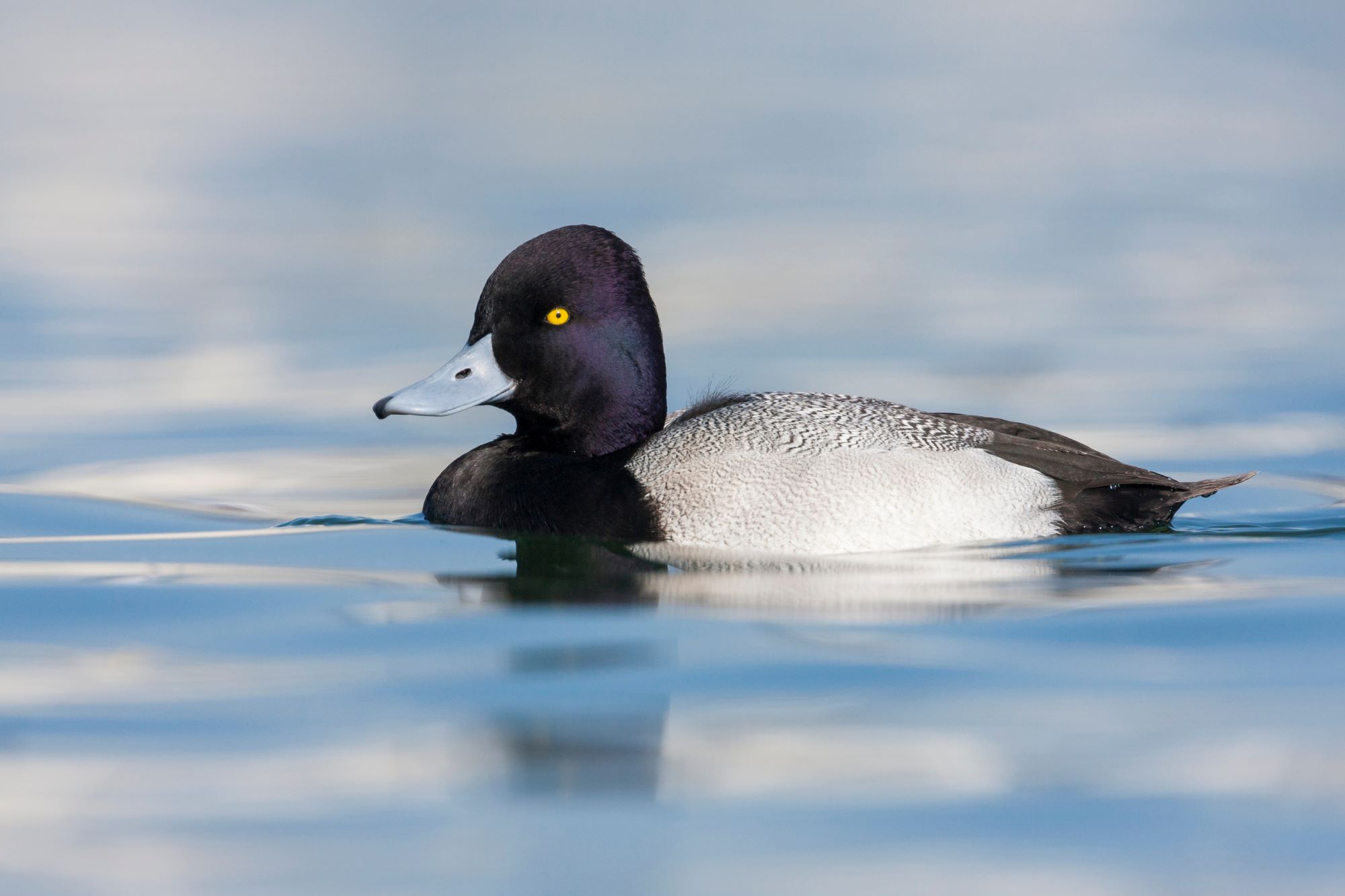
Lesser Scaups in Utah
Lesser Scaups, a prominent species of diving ducks, are a regular sight in Utah's water bodies, particularly during migration seasons. Scientifically known as Aythya affinis, these medium-sized ducks are distinguished by their compact, rounded heads and their unique diving abilities. Male Lesser Scaups are striking with their glossy black heads, white sides, and black tails, while females display brown plumage with a white band near the bill, making them well-camouflaged in aquatic environments. In Utah, Lesser Scaups are commonly found in larger lakes, reservoirs, and occasionally in parts of the Great Salt Lake, preferring open water habitats where they can dive for food. They are most commonly observed during the spring and fall migrations, although some may overwinter in the state, finding Utah's water bodies a suitable habitat during colder months.
The feeding habits of Lesser Scaups are adapted to their life in aquatic environments. As diving ducks, they submerge completely to forage for food, primarily dining on mollusks, crustaceans, aquatic insects, and plant material. Utah's lakes and reservoirs, rich in these food sources, provide ideal foraging grounds for Lesser Scaups. Their diving behavior is fascinating to observe, as they can reach considerable depths and stay submerged for extended periods. This foraging strategy is crucial for their survival, especially in the nutrient-rich waters of Utah's larger lakes, where aquatic invertebrates and vegetation are abundant.
Lesser Scaups, while not typically breeding in Utah, play a significant role in the state's wetland and aquatic ecosystems during their migratory periods. Their presence indicates the health and productivity of these ecosystems, as these ducks require specific conditions for feeding and resting during their long migratory journeys. In Utah, conservation efforts aimed at maintaining and restoring healthy aquatic ecosystems are vital for supporting the migratory populations of Lesser Scaups. These efforts not only benefit the scaups but also enhance the ecological diversity and health of the state's water bodies.
For birdwatchers and nature enthusiasts, the arrival of Lesser Scaups in Utah during migration seasons is an exciting event. These ducks, with their distinct plumage and diving skills, add dynamism and diversity to the state's avian community. Observing Lesser Scaups in their natural habitat, whether diving for food or resting on the water's surface, provides a window into the fascinating behaviors and adaptations of waterfowl. Their presence in Utah's lakes and reservoirs is a reminder of the interconnectedness of migratory bird species and the importance of conserving natural habitats along their migratory routes.
In summary, Lesser Scaups are an important part of Utah's birdlife, contributing to the state's biodiversity and serving as indicators of wetland health. Their migratory presence offers opportunities for research, education, and birdwatching, highlighting the significance of wetland and aquatic conservation. As Utah continues to support and protect its natural water bodies, it ensures that Lesser Scaups, along with many other migratory and resident waterfowl species, continue to find a safe and nourishing refuge within the state's borders.